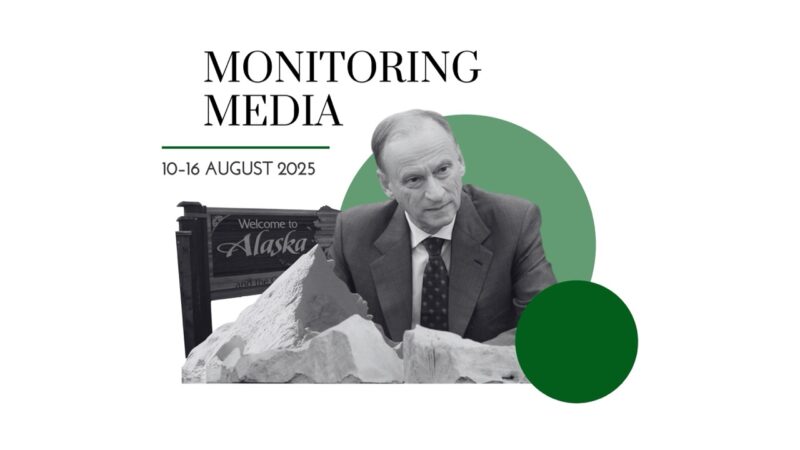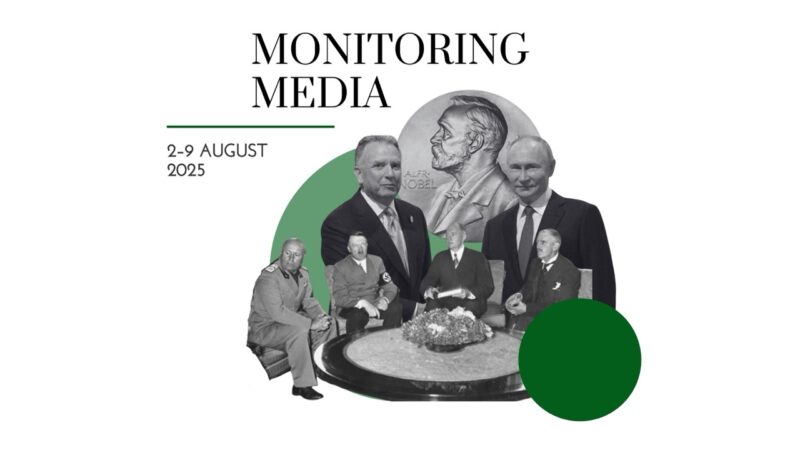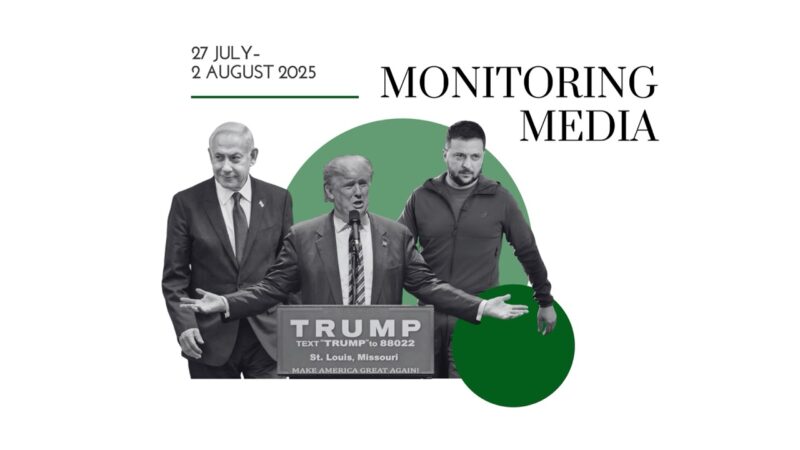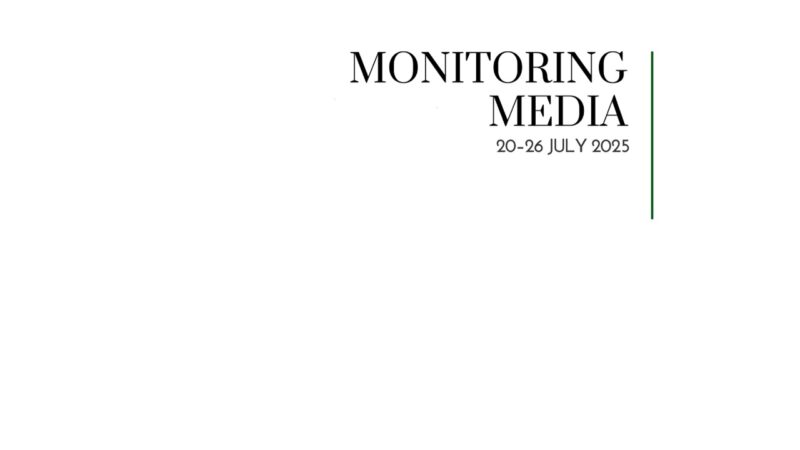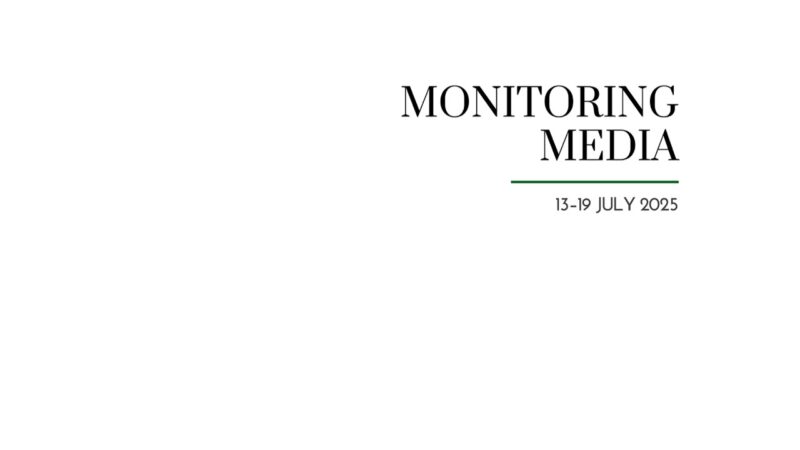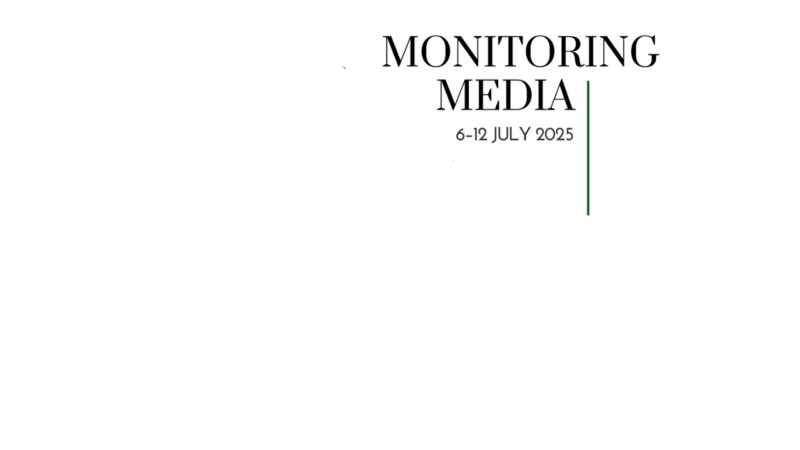Stopping Russo-Ukrainian war requires understanding its root causes
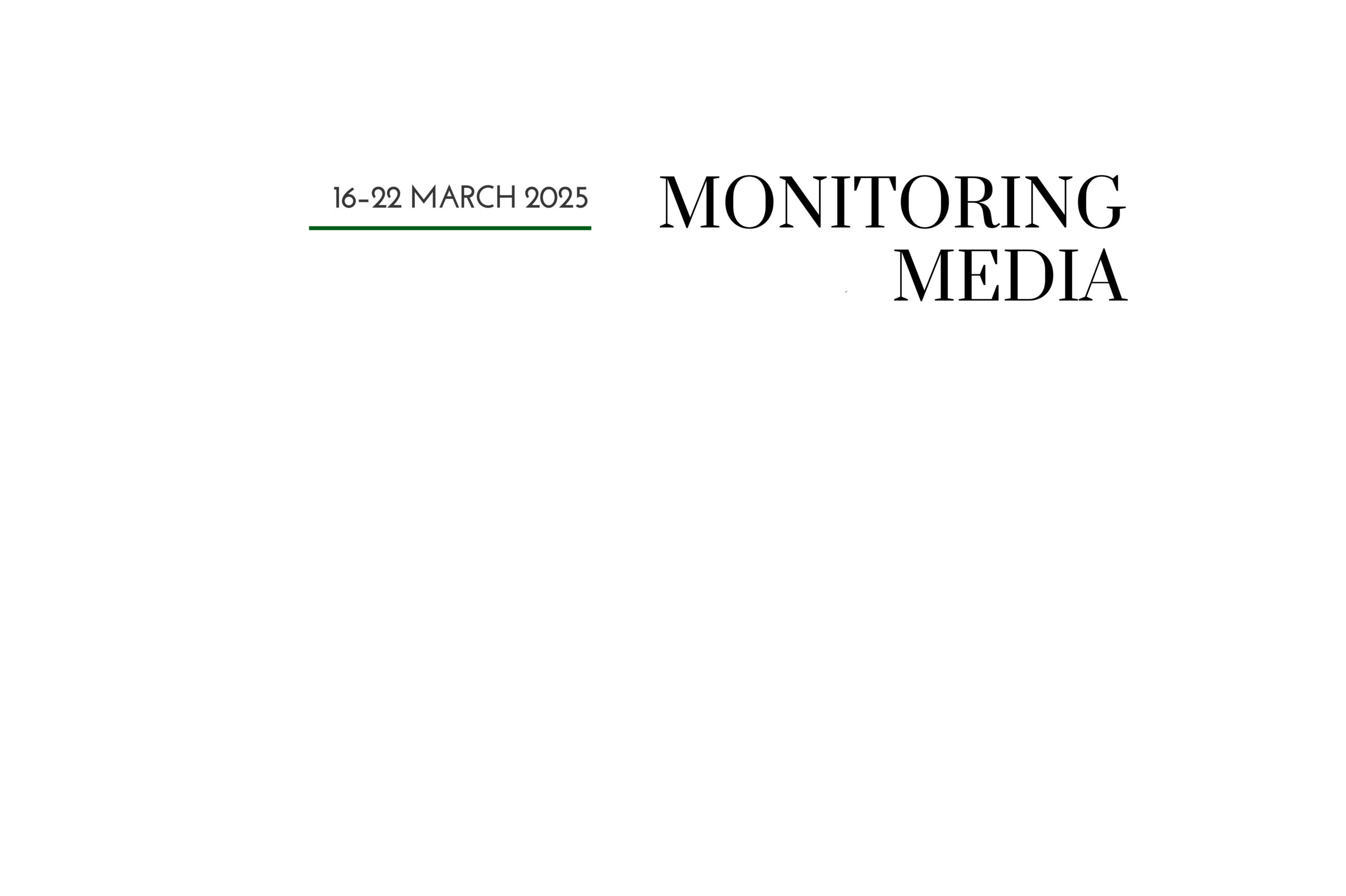
CIUS weekly report on North American media coverage of Ukrainian affairs, 16–22 March 2025
Four publications (Foreign Affairs, Foreign Policy, Politico, and The Globe and Mail) were selected to prepare this report on how Ukraine has been portrayed in the North American press during the past week. The sample was compiled based on their impact on public opinion as well as on their professional reputation, popularity among the readership, and topical relevance. These publications represent centrist viewpoints on the political spectrum.
This MMS report covers only the most-read and relevant articles about Ukraine, as ranked by the respective North American publications themselves in the past week. Its scope covers promoted articles on home pages and articles from special sections on Ukraine, with the hashtag #Ukraine, from the paper editions of the publications, and about Ukraine from opinion columns and editorials.
Featured topics
- The world and Ukraine: Europe is the key to Ukraine’s survival; best option for Europe is to arm postwar Ukraine; Trump’s diplomacy is handing Moscow the advantage.
- Russia at war: Stopping Russo-Ukrainian war requires understanding its root causes; Russia intensifies its hybrid war against the West; Russia’s wartime alliance an unstable relationship of convenience.
MMS summaries
Europe is the key to Ukraine’s survival. Celeste A. Wallander (Foreign Affairs) emphasizes that Kyiv can continue its fight against Russia even if it loses US support. With its existing stockpiles and production capacity, Ukraine can provide for its own defence for several months. No single state in Europe has the financial and industrial resources to replace the US, but together they can be a substantial support for Ukraine: “Europe is already spending a great deal on its own assistance to Ukraine, it still has additional financial, procurement, and industrial production means that could fill potential future gaps in Kyiv’s defense. In addition to drawing from its own weapons stocks and production capabilities, Europe can also procure ammunition and components for Ukraine on international arms markets, as the United States has done over the past three years.” According to Wallander, “Even with limited US assistance, Ukraine could, with Europe’s support, still achieve advantages that would strengthen its hand against Russia and thwart the Kremlin’s intention to outlast Ukraine and force Kyiv to surrender to Putin’s demands.”
Stopping Russo-Ukrainian war requires understanding its root causes. Zhanna Nemtsova (Politico) argues that a peaceful settlement of Russia’s war against Ukraine is possible only if the root causes of this war are properly understood. The root cause of Moscow’s aggression is not foreign policy factors (the desire to seize Ukrainian territory or the threat of NATO) but rather the domestic political agenda within Russia: “Trump misunderstands a crucial element of the war, and that is that Russian President Vladimir Putin launched it primarily for domestic political reasons, not to respond to any kind of external threat.” The path to peace lies in understanding that the success or failure of any peace agreement will depend on “whether they change Russia’s political equation domestically, to either increase the likelihood of new Russian aggression or lower it.” The war has made it easier for the Kremlin to repress its population in order to maintain power and has given Moscow extremely broad powers: “It is a perfect pretext for increased repression, tightened censorship laws and an all-purpose explanation for economic hardships. The elimination of independent media and laws against criticizing the military have made it easier to brainwash the Russian people into believing that an endless war is necessary despite its huge costs in terms of lives and economic hardship.” In the author’s opinion, the Kremlin does not want peace but only a truce to rearm and prepare for a new aggression. That is why Kyiv’s demand for guarantees of Ukraine’s security is justified—namely, ensuring important provisions in the peace agreement that will contribute to long-term changes in the Russian economy and society. First, the agreement must contain provisions that will not allow Russia to rearm. Second, Russia must pay for Ukraine’s recovery. Third, add provisions that could weaken the Kremlin’s repression at home and make it more difficult for it to rally Russian society for war: “One possible way could be reincarnating something like the Jackson-Vanik amendment, which required the Soviet Union to agree to respect certain human rights and permit Jewish emigration in exchange for expanded trade with the United States. In this case, in return for lifting some sanctions, the West could insist that Russia release political prisoners, abandon censorship laws including those outlawing ‘foreign agents’ and other organizations perceived as hostile to the regime, and unblocking platforms like YouTube, Facebook and Instagram.” According to Nemtsova, “Under current circumstances, the need for a ceasefire in Ukraine is urgent. But execution matters. If the Trump administration wants a good deal to end the war, it needs to pay attention to the details.”
Best option for Europe is to arm postwar Ukraine. Rajan Menon (Foreign Policy) argues that armed neutrality is the best option for Ukraine. Strengthening Ukraine’s defence capabilities is in Europe’s own interest, given the recent changes in US foreign policy priorities. The most realistic and least risky way for Europe to ensure Ukraine’s security is to “help Kyiv adopt a strategy of armed neutrality.” Armed neutrality should be part of a negotiated settlement of Russia’s war against Ukraine: “Under a long-term agreement, willing European states, joined by the United Kingdom, would commit to training and equipping Ukraine’s army. The goal would be to eventually create a modernized Ukrainian force, one far more formidable than the one Russia has faced since its 2022 invasion.” Europe has the time and financial and industrial resources to achieve this goal: “Europe and the UK have provided 40 percent of the military aid—worth over $45 billion—Ukraine has received from the West since the war began. Between 2019 and 2023, five of the world’s top 10 arms exporting countries were European; they accounted for almost 28 percent of global sales—more than two times Russia’s share. Europe also has several world-class armament manufacturing companies, such as BAE Systems, Rheinmetall, Thales, Saab, and others. And Europe’s economic resources and record for technological innovation, which far surpass Russia’s, give it a strong foundation on which to build—for both helping move Ukraine toward armed neutrality and for boosting its own defense capabilities.” While Russia is recovering from its huge losses in the war, Europe should arm Ukraine as much as possible and train its army. According to Menon, “As for Ukraine, now that NATO membership looks all but impossible, it needs sustained military training and weapons supplies, which Europe can provide to make armed neutrality a feasible strategy.”
Russia intensifies its hybrid war against the West. Andrei Soldatov and Irina Borogan (Foreign Affairs) emphasize that the peace talks are an opportunity for Russia to intensify its hybrid war against the West. Since the beginning of Russia’s escalated invasion of Ukraine in 2022, sabotage operations linked to Russian intelligence have been recorded in 15 countries. In the author’s opinion, any assumption that President Vladimir Putin is “going to be more generous than he has to be” and that Russian intelligence services will stop their subversive activities is dangerously misguided. The Kremlin will not allow it. At the same time, Russian intelligence services have a deep distrust of America’s intentions: “For centuries, Russia has viewed the West as intent on Russia’s subjugation or outright destruction, and Soviet and Russian intelligence services have operated for decades on the assumption that the West is an implacable foe. To Moscow’s spies, Trump’s courting of Putin has provided an opportunity to expand and strengthen their subversion campaign in Europe.” Over the three years of Russia’s full-scale war against Ukraine, Russian special services have been fully mobilized in Europe and have launched a full-scale hybrid war: “These attacks are not merely designed to keep European governments off-kilter. They are also aimed at diminishing Europeans’ support for Ukraine by raising costs on the governments and industries in ways that are not easy to counter, harassing the population, and seeking vulnerabilities in European defense.” According to Soldatov and Borogan, “Unless the West is prepared to come up with a cohesive strategy to counter those attacks with a signal strong enough to serve as an effective deterrent, Moscow will see few downsides to accelerating this campaign in any post-deal future.”
Trump’s diplomacy is handing Moscow the advantage. Marc Mackinnon (Globe and Mail) argues that Russian President Vladimir Putin’s recent offer of a conditional 30-day ceasefire in Ukraine was a strategic trap designed to make Ukrainian President Volodymyr Zelensky appear as the obstacle to peace. Putin’s conditions—halting Ukraine’s mobilization and cutting off Western military aid—were deliberately unrealistic, ensuring Kyiv’s rejection while allowing Moscow to frame Ukraine as unwilling to negotiate. MacKinnon suggests that the US President Donald Trump is playing into Putin’s hands, offering concessions without exacting anything in return. By engaging with Russia before defining his stance on key issues, Trump has “handed the Kremlin win after win in exchange for nothing,” the author notes, citing US Vice President JD Vance’s statement that Ukraine’s NATO ambitions and full territorial recovery are “unrealistic.” This shift has weakened the previously unified Western position on the war, emboldening Moscow while leaving Ukraine diplomatically vulnerable. MacKinnon further argues that Trump’s approach has rehabilitated Putin on the global stage, normalizing relations rather than maintaining pressure on Russia and ending the isolation strategy pursued under former US President Joe Biden. Meanwhile, the Kremlin’s readout of a recent Trump-Putin call highlights Moscow’s enthusiasm for renewed US-Russia cooperation, even mentioning potential hockey games as a symbolic gesture of goodwill. “Far from isolated, Mr. Putin is now back at the centre of international affairs.” However, Putin’s promise to halt strikes on Ukraine’s energy grid for 30 days was immediately contradicted by continued Russian attacks, demonstrating what the author calls the Kremlin’s bad-faith approach to negotiations. “Nothing has changed,” Zelensky told EU leaders, underscoring that Russia’s aggression continues unabated despite Putin’s diplomatic maneuvers.
No peace in Ukraine without the return of thousands of deported children. Marsha Lederman (Globe and Mail) reminds readers that a major point of contention in recent ceasefire discussions between US President Donald Trump and Russia’s President Vladimir Putin is the fate of thousands of Ukrainian children forcibly taken to Russia. While the two leaders agreed on a limited 30-day ceasefire and a prisoner swap, there is no indication that Trump raised the issue of these abducted children—despite Ukraine’s insistence that their return should be a key condition of any deal. The Ukrainian initiative Bring Kids Back UA calls this mass deportation “the largest kidnapping operation in modern history,” accusing Russia of systematic efforts to erase Ukrainian identity through forced adoptions, name changes, and ideological indoctrination [MMS note: according to the Ukrainian national database Children of War, since February 2022 close to 20,000 Ukrainian children have been abducted from Russian-occupied areas and transferred to different Russian-controlled territories or to Russia itself]. Lederman underscores the glaring absence of this issue from high-level talks, noting that while Trump and Putin discussed hockey games, they failed to address what Ukraine considers a profound war crime. “It’s more than a tragedy,” Bring Kids Back UA stated, “It’s a deliberate attack on Ukraine’s future.” Further exacerbating the crisis, the Trump administration cut funding for a Yale University database that tracked the identities and locations of as many as 35,000 missing Ukrainian children. The loss of this database could significantly hinder accountability efforts, including the International Criminal Court’s war crimes case against Putin and Russia’s children’s rights commissioner, Maria Lvova-Belova. Lederman highlights the troubling priorities in international diplomacy, exposing the contrast between the Kremlin’s claims that the children were sent to “recreation camps” and the growing evidence of forced Russification and psychological coercion. Ukraine’s former Foreign Minister Mykola Kuleba, who founded Save Ukraine, an NGO that regularly organizes rescue missions to return deported children from Russia, expressed frustration that world leaders are not doing enough: “The main goal of Russia is to turn Ukrainian children into Russians. We ask, we beg the world: help Ukraine bring our kids back.”
Russia’s wartime alliance an unstable relationship of convenience. Christopher Chivvis (Foreign Affairs) examines the evolving geopolitical dynamics shaped by Russia’s war against Ukraine, arguing that while Moscow has deepened its partnerships with China, Iran, and North Korea, the so-called “axis of upheaval” is neither as unified nor as enduring as some US policymakers suggest. The author notes that Russia’s reliance on these partners has been driven primarily by wartime necessity rather than a shared long-term vision. Iran’s supply of drones and missiles, North Korea’s provision of munitions and troops, and China’s indirect economic and technological support have helped Moscow to sustain its military campaign despite Western sanctions. However, Chivvis contends that these alliances are more transactional than ideological. “The coalition has been strengthened by the [Russo-Ukrainian] war, but its members’ interests are less well fitted than they appear on the surface,” the author notes. Chivvis stresses, “Washington should not lump these countries together. Historically, when countries roll separate threats into a monolithic one, it is a strategic mistake.” While Russia has benefitted from its military and economic exchanges with Iran and North Korea, these partnerships are unlikely to be as strong once Moscow no longer needs immediate battlefield support. Likewise, Beijing has been cautious in its backing of Russia, seeking to avoid jeopardizing its economic ties with the West. The author suggests that the US should focus on ending the war in Ukraine to disrupt this fragile coalition rather than reinforcing the perception of a rigid “axis” that could push these countries into a more durable anti-Western bloc: “It is not at all uncommon for wartime coalitions to fall apart once a war ends.”
